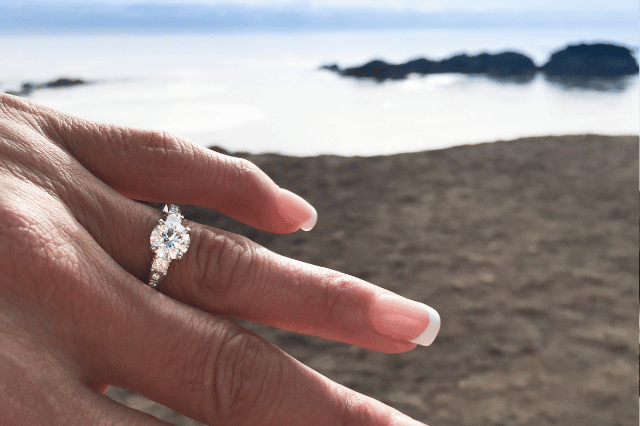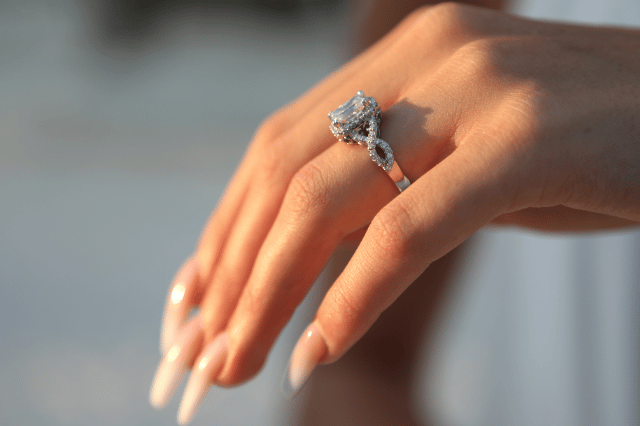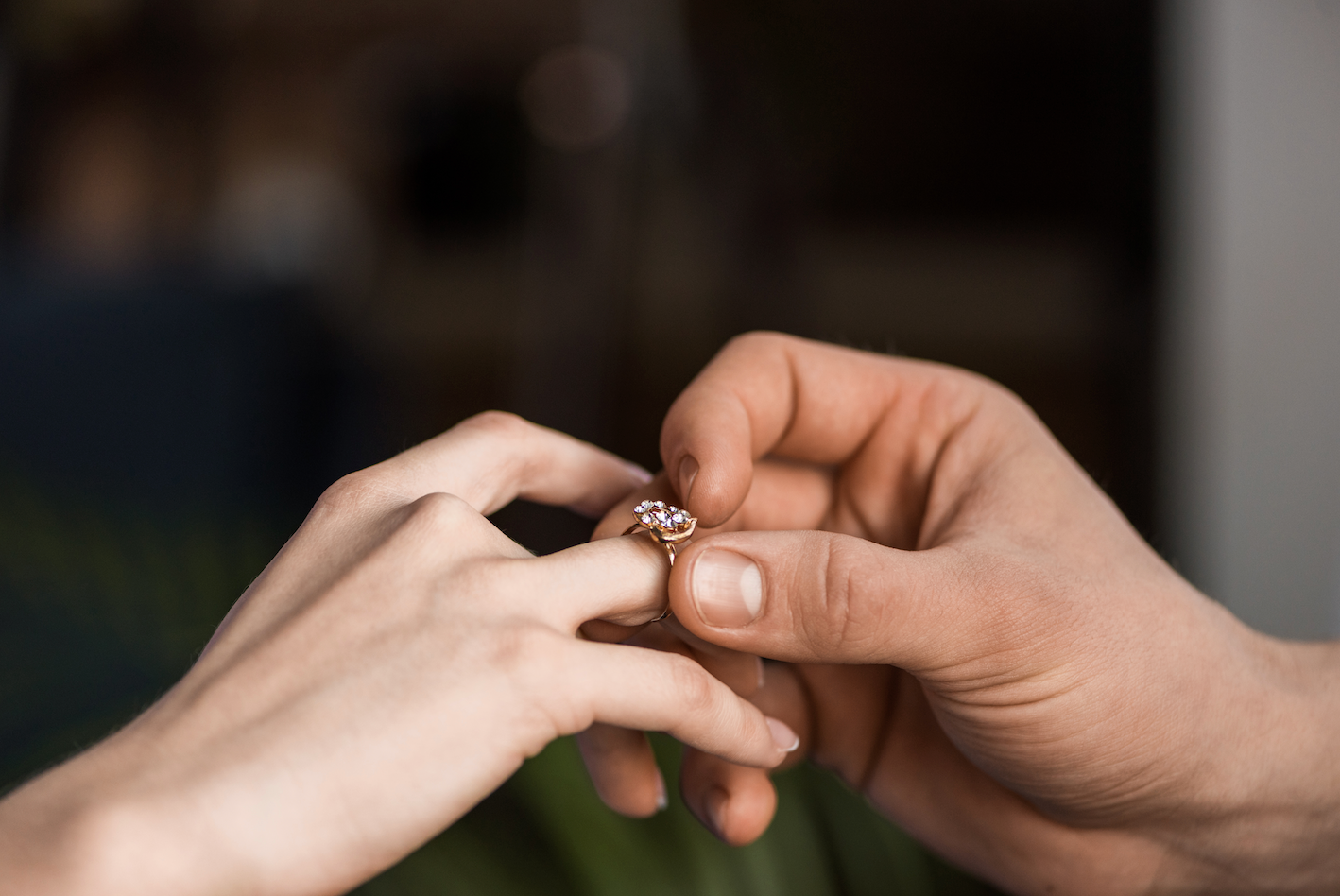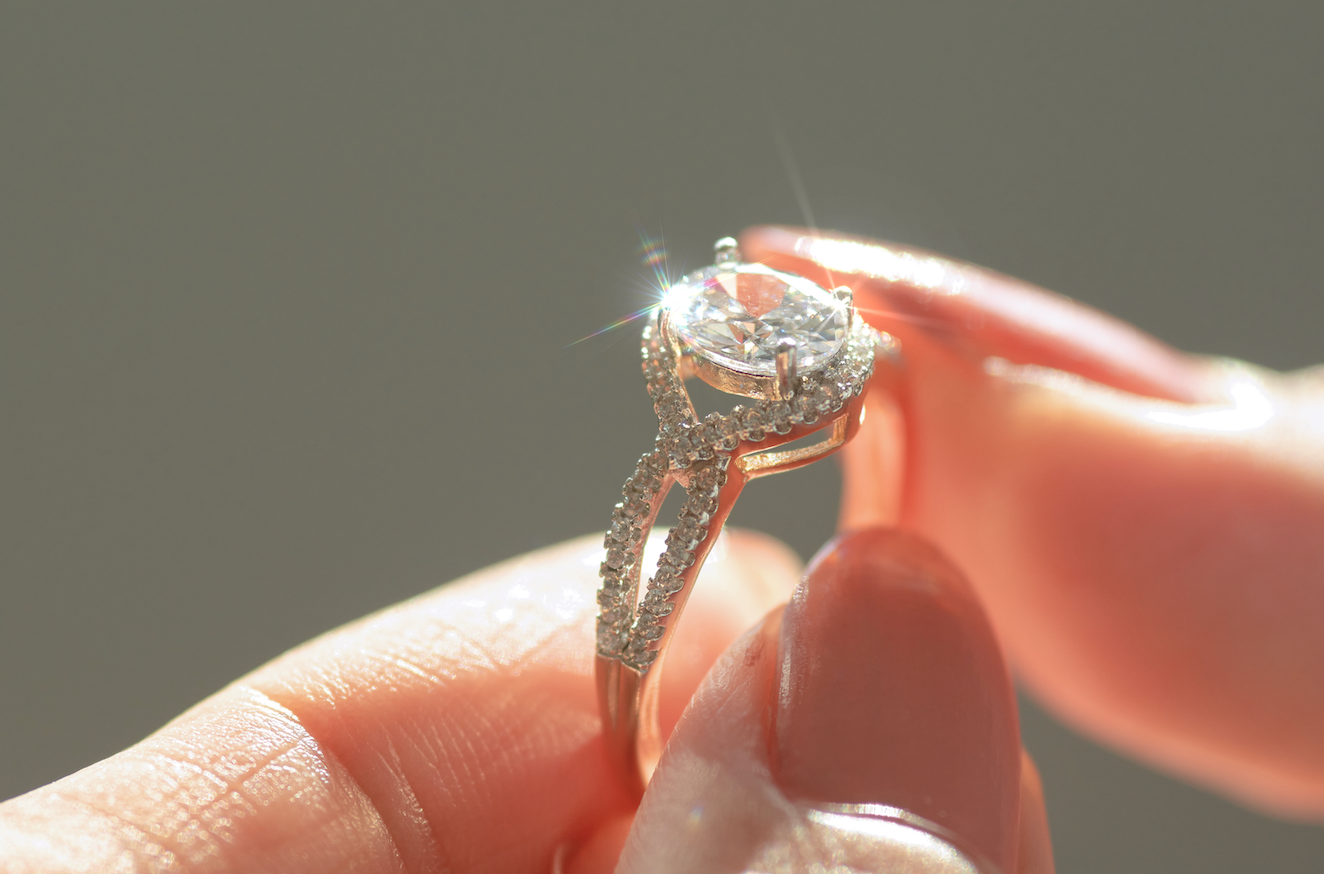Weddings are rich with symbolism, and very few traditions are as universally recognized – or as personally meaningful – as the exchange of rings. These small bands carry immense significance and represent love, commitment and a promise of forever. Yet despite their importance, one question continues to spark curiosity and conversation: which finger is the wedding ring supposed to go on?
Is there a ‘right’ finger to wear it on? Do both partners wear theirs the same way? Does it differ by country, culture, or even personal choice? The short answer is yes, to all the above. While tradition does offer a widely accepted answer, the truth is that customs can vary widely based on heritage, religion, and individual preference.
The Ring finger Tradition has always been the left ring finger. This is the case in many Western cultures, including Australia, the UK, the United States and Canada. The wedding ring is traditionally worn of the fourth finger of the left hand and is commonly referred to as the ‘ring finger’. This has become the standard for most engagements and weddings in English-speaking countries.
But why this specific finger?
This specific finger is chosen due to the ‘vein of love myth’ and the ring finger tradition dates all the way back to ancient Rome and Egypt, where it was believed that the fourth finger on the left hand contained the vena amoris – Latin for the ‘vein of love’ – a direct vein running from the finger to the heart. While modern anatomy tells us this vein does not actually exist, the romantic symbolism stuck, and the custom has continued for centuries. Also, the left hand has been historically considered less dominant, and therefore rings worn on that hand were seen as less likely to be damaged, which is a practical consideration in times when people worked more with their hands.
However, global traditions of the wedding ring finger differ. While the left ring finger is the most common placement in Western countries, it’s far from a universal rule and around the world, many cultures follow their own beautiful traditions.
Right hand ring traditions are present in many countries. In countries like Germany, Russia, Poland, Austria, Indie, and parts of Scandinavia, the right hand is where the wedding ring is typically worn. In these cultures, the right hand is considered more ‘honourable’ or symbolic of strength, which makes it the preferred choice for a ring that represents lifelong commitment. To exemplify this, in Germany and the Netherlands it’s common for the engagement ring to be worn on the left hand and moved to the right hand after the wedding. In India, traditions may vary by region and religion, but many people wear wedding rings on the right hand – especially since the left hand is traditionally seen as less auspicious in Hindu culture.
And some cultures separate the two rings entirely, with the engagement ring on one hand and the wedding ring on the other. A person may wear their engagement ring on one hand (often the right), then wear the wedding ring on the opposite after marriage. This practice helps to distinguish between the two stages of engagement and marriage while still honoring both symbols.
Same-sex couples and modern interpretations of wedding ring traditions can be more fluid which allows partners to decide what feels most meaningful to them. Some choose to follow traditional ring finger etiquette, while others create new customs altogether such as wearing matching rings on different hands or choosing entirely different fingers. More and more couples today also consider personal significance over tradition. For instance, artists or musicians may avoid wearing rings on their dominant hand to prevent interference with their craft. People who work with their hands may prefer silicone bands or choose to wear the ring on a chain around the neck when wearing it on their finger is not practical. Others may find that a different finger simply feels more comfortable or aesthetically pleasing. In modern relationships, the most important guideline is simply what feels right for you.
Another question our team gets asked often is how do the wedding and engagement rings fit together? In cultures where both rings are worn every day, it’s customary to stack the wedding ring below the engagement ring on the same finger, which is again typically the left hand. The logic to this is during the ceremony, the wedding band is placed on the finger first, so it sits ‘closer to the heart’. Some brides move their engagement ring to the right hand during the ceremony for room, then slide it back on top afterwards, and others prefer to wear only one ring for simplicity. There are even bridal sets designed with both rings in mind, so they nestle perfectly side by side. These can include flush-fitting bands, curved or contoured designs, or rings that interlock for a seamless look.
Cultural ring placement is also influenced by religion. For example, in Jewish wedding ceremonies, it’s traditional to place the wedding band on the right index finger during the ceremony, though many brides later move it to the left ring finger. In Orthodox Christian weddings, the ring is worn on the right hand which is consistent with regional and religious customs. In Muslim weddings, wearing a wedding ring is more cultural than religious, and there are no set requirements regarding which hand or finger. Some Muslims may wear a ring on the right hand, while others opt for the left. In some Eastern cultures, rings are not a historical part of wedding ceremonies at all. In China and Japan, traditional marriage customs did not historically include wedding rings; however, the Western influence has made ring-giving popular in recent decades.
Let Your Ring Tell Your Story with Vinny and Charles
Whether you choose to wear your wedding ring on your left hand, your right, or somewhere else entirely, the decision is yours to make. It’s less about following a rigid rule and more about keeping a promise – a visible, everyday symbol of the love and life you’re building together.
At Vinny and Charles, we believe your ring should feel as meaningful as the bond it represents. That’s why we create handcrafted, ethically sourced, and beautifully designed rings that are made to last – and made to tell your story, your way.
Find our full range of wedding rings, engagement rings, and custom designs on our website today, and choose the perfect ring for the finger – and life – that feels right for you.





